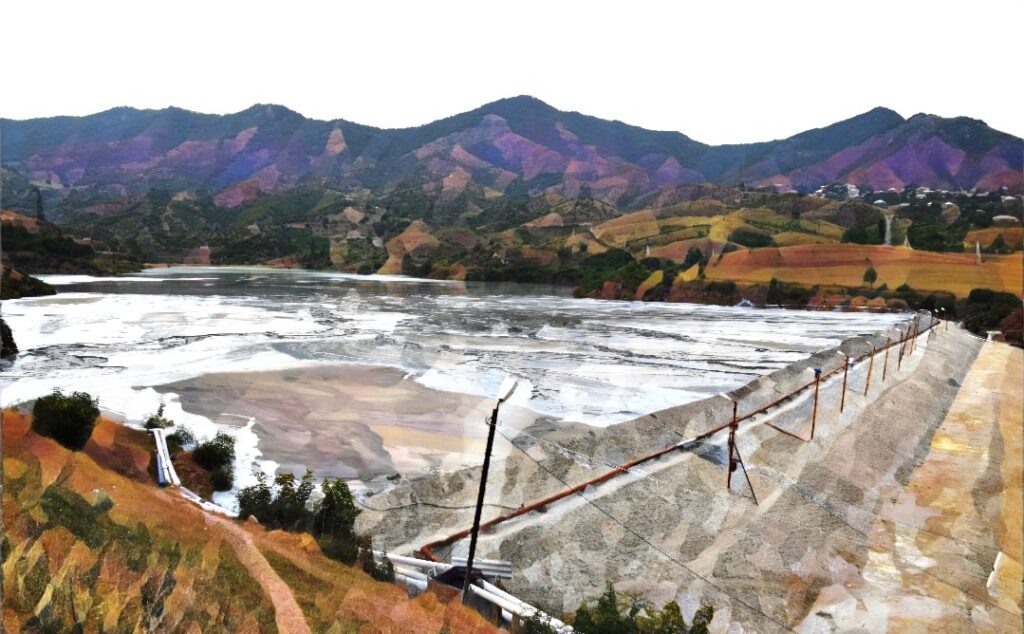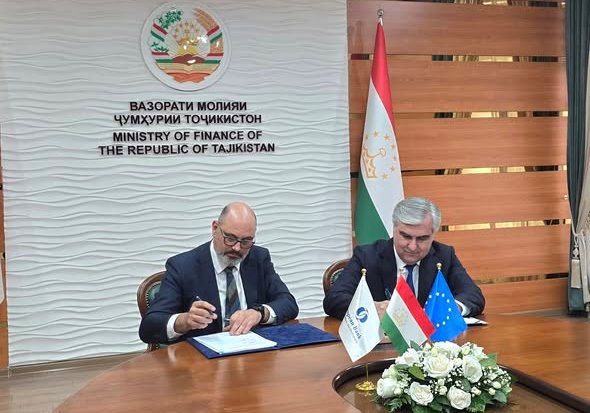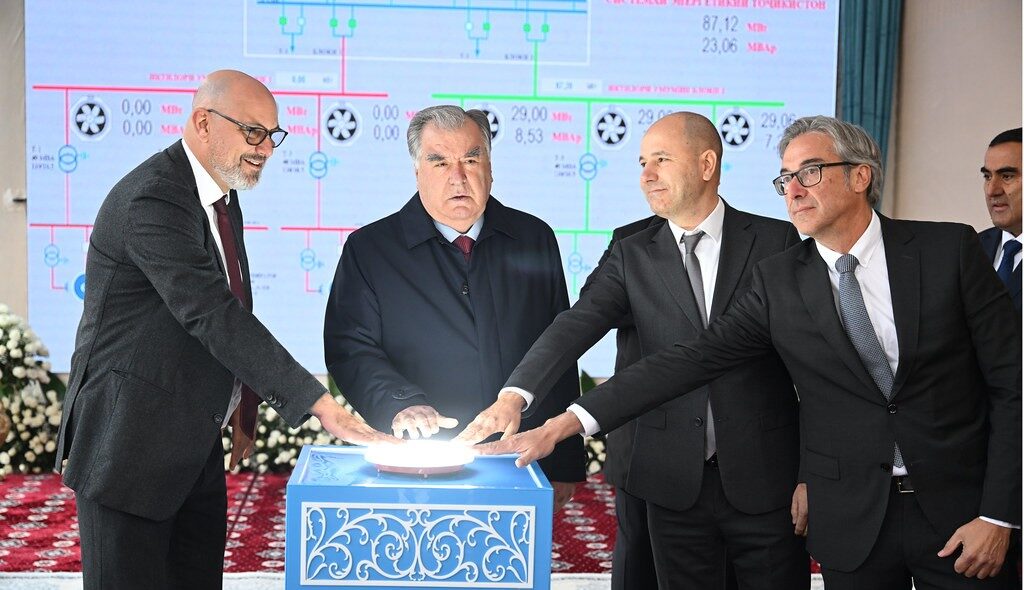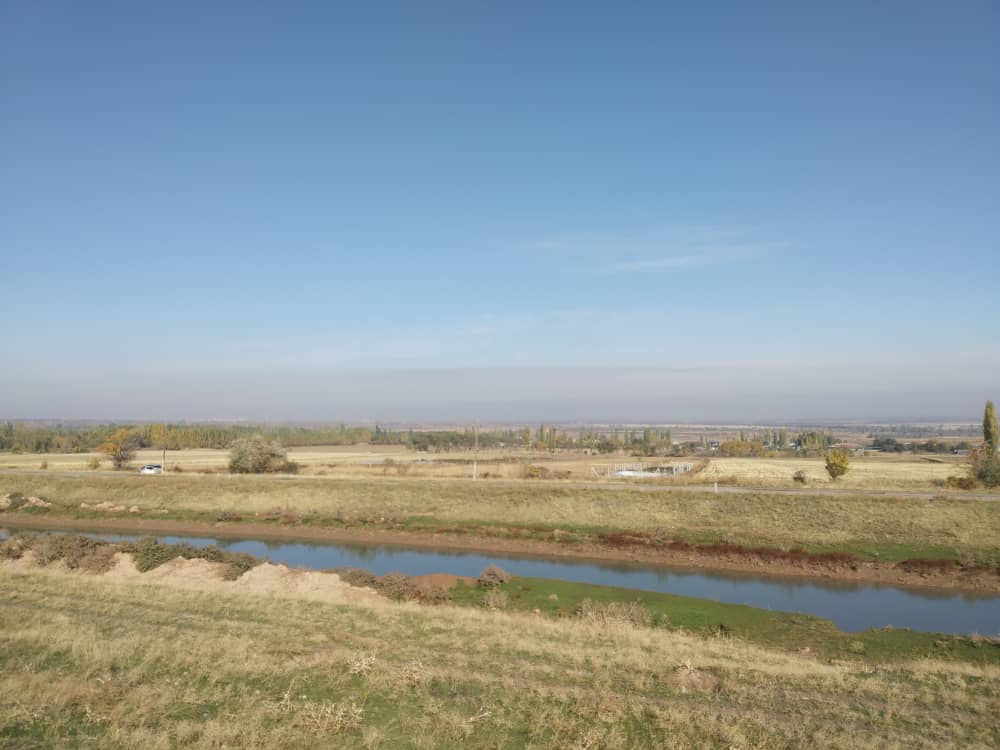The European Bank for Reconstruction and Development (EBRD), established in 1991, has been working in the Kyrgyz Republic since 1992 and has invested in over 250 projects amounting to over €1 billion. TCA sat down with Hüseyin Özhan to discuss the bank’s operations in Kyrgyzstan.
TCA: Could you briefly introduce the EBRD and its main objectives within Kyrgyzstan?
Özhan: The European Bank for Reconstruction and Development (EBRD) is owned by 73 shareholders as well as the EU and the EIB and has been operating in Kyrgyzstan for over 30 years. During this time, we have invested in more than 250 projects, surpassing €1 billion in total investments across the country. As an international financial institution, our operations in Kyrgyzstan are guided by a country strategy jointly prepared by the EBRD and local stakeholders and approved by the Bank’s Board of Directors. This year marks a significant milestone, as we have approved a new five-year country strategy outlining our priorities in Kyrgyzstan. We focus on fostering private sector growth and enhancing competition and also invest in infrastructure and sovereign-guaranteed projects. These efforts position the EBRD as one of the most influential international players in Kyrgyzstan.
TCA: You mention the bank recently approved its new five-year strategy for Kyrgyzstan; could you share what this plan entails?
Özhan: Our country’s strategies are built on diagnostics conducted to identify transition gaps. These strategies align with the EBRD’s Strategic and Capital Framework and the Bank’s medium-term strategy and combine elements of the reform agenda and investment needs.
The new strategy for Kyrgyzstan focuses on three key priorities: private sector development and competitiveness, the green economic transition with an emphasis on decarbonization and energy efficiency, and improved connectivity across the country. These priorities align closely with Kyrgyzstan’s recent reform agenda and development goals, which aim to enhance competitiveness, attract foreign investment, boost trade, and strengthen the country’s regional relevance.
Decarbonization and resource efficiency are particularly critical, as Kyrgyzstan is significantly impacted by regional water scarcity. This makes sustainable water management a central focus, with numerous projects planned to support sustainable development in this sector.
Additionally, developing the private sector, particularly local businesses, is vital. The EBRD works closely with the government in this regard, not only by providing funding but also through initiatives like “risk-sharing networks” and advisory programs for small businesses. These efforts help enhance productivity, relevance, and competitiveness, ensuring that Kyrgyzstan’s private sector is well-equipped to thrive in the market.
TCA: How does EBRD’s mission differ from other development banks or financial institutions in the region?
Özhan: Our institution has a slightly different approach to delivering our work and fostering transition in Kyrgyzstan. Unlike some other international financial institutions (IFIs) that provide budget support, the EBRD operates on a project-by-project basis and channels most of its resources to support good private-sector initiatives. A recent example of project finance is the signing of water projects in three cities in Kyrgyzstan. These sovereign lending agreements, signed with the Ministry of Finance, aim to modernize regional water networks.
The EBRD is the largest private sector investor among IFIs in Kyrgyzstan, with 68% of our investments directed towards private sector development. This emphasis on private sector engagement distinguishes us from other IFIs operating in the country.
Despite these differences, there is strong collaboration with our partner institutions as we all work toward Kyrgyzstan’s sustainable development goals.
TCA: What are the main problems with the current water infrastructure, and how will modernizing it benefit Kyrgyzstan and the region?
Özhan: This is a regional challenge affecting all of Central Asia. Aging infrastructure across the region requires substantial investment to modernize and improve resource efficiency. Central Asia is experiencing the effects of climate change at a rate higher than the global average, with regional temperature increases projected to exceed the global mean. Combined with relatively scarce water resources, this creates an urgent need for significant investments in water security, sustainable water supply, and effective water sector management, including irrigation systems.
In Kyrgyzstan, the situation is particularly critical. By 2040, the country is expected to be among those most affected by water stress. To address this, we are collaborating with Kyrgyz authorities to implement green policies aimed at mitigating the problem. Our support includes providing financial and advisory services to both private and public entities on climate risk management, climate governance, and climate-resilient investments. Efficient water use and the sustainability of resources are central to Kyrgyzstan’s future and the region as a whole.
The challenge of aging infrastructure is a shared issue across Central Asia, much of it dating back to Soviet times, with minimal modernization undertaken since. This has resulted in significant water loss in both potable and wastewater systems. The scale of the need is immense, and regional authorities are increasingly aware of the looming water stress.
We are addressing these challenges through various projects across Central Asia. This year, in Kazakhstan, we signed the largest wastewater treatment facility financing project in the region. In Uzbekistan, we are collaborating with the national water company, Uzsuvtaminot, on multiple initiatives. In Mongolia, we are working on both potable and wastewater projects, and similar efforts are underway in Tajikistan. Our focus remains on addressing these critical infrastructure gaps to ensure sustainable water management for the region’s future.
TCA: Has there been a focus on new sustainable agricultural infrastructure like drip irrigation or hydroponic agriculture?
Özhan: According to EBRD guidelines, irrigation is classified as infrastructure. All the irrigation projects we work on incorporate state-of-the-art technology to maximize efficiency and promote sustainable resource utilization. We ensure that these projects adhere to global best practices in order to set high standards for sustainability and effectiveness.
In addition to infrastructure projects, we complement these efforts by offering SME loans through our partner banks, specifically tailored to support the agribusiness sector. For instance, we are currently developing a new product, which is not on the market yet, focused on agribusiness. This initiative aims to further bolster the growth and modernization of the sector.
TCA: What role does the EBRD play in fostering innovation and supporting startups in Kyrgyzstan?
Özhan: Supporting startups and venture capital is a key priority for us. One noteworthy initiative is the Star Venture program, which provides targeted support to promising startups for a minimum of 18 months. Through a partnership with Cambridge University, participants receive advisory training, strategic thinking courses, and workshops to help them secure funding and scale their businesses.
Additionally, two other flagship programs deserve mention: Women in Business (WiB) and Youth in Business (YiB). The WiB program is designed to support companies owned and operated by women, including startups and micro-enterprises. Meanwhile, YiB, launched a year and a half ago, focuses on empowering young entrepreneurs by supporting businesses led and managed by youth. Together, these programs offer substantial backing to small and medium-sized enterprises (SMEs) and micro, small, and medium-sized enterprises (MSMEs), fostering innovation, inclusion, and growth in the business ecosystem.
TCA: Is there an emphasis on one particular industry in Kyrgyzstan?
Özhan: While it’s difficult to single out a specific sector in Kyrgyzstan, the country does have a competitive edge in certain areas, particularly tourism. In the post-COVID era, the Issyk-Kul region, with its stunning natural beauty, holds tremendous potential for tourism. This sector is expected to thrive in the short, medium, and long term, making it a standout area for development.
Our support for water projects in the region is designed to preserve its natural environment, ensuring sustainable development. Similarly, the road infrastructure projects we are financing aim to create a more favorable environment for tourism growth. Additionally, the government is deeply committed to developing this sector, further underscoring its importance to Kyrgyzstan’s economy.
TCA: Has there been any notable collaboration between EBRD and China’s Belt and Road Initiative (BRI)?
Özhan: East-west connections are crucial for the Central Asian market as a whole. We have conducted an extensive study focusing on sustainable transport corridors that link the East with Europe. The study identifies both soft and hard infrastructure investments needed to establish sustainable and efficient transport alternatives along these corridors.
This analysis highlights priority investments not only in Kyrgyzstan, but across the entire Central Asian region. These investments aim to boost economic activity, enhance export capacity, and create more efficient, sustainable connections between the East and West, fostering regional integration and development.
TCA: Are there any sectors besides tourism that will come into focus over the next five to ten years?
Özhan: While Kazakhstan had the right conditions for an IT boom, it will be critical raw materials in Kyrgyzstan. This industry will be very important, and the government wants to further develop to generate larger foreign currency revenues. Renewable electricity generation, which is directly linked with water management as well, particularly with the Kambarata HPP, will change the cause for Kyrgyzstan’s energy security and regional integration. Renewable energy will be, especially through a large project like the Kambarata HPP, key for the country. The last sector I want to mention is the local SMEs; these are the ones who will be providing resilience for the economy. The government is showing a willingness to improve its legislation to attract new investments, particularly in the mining sector.









